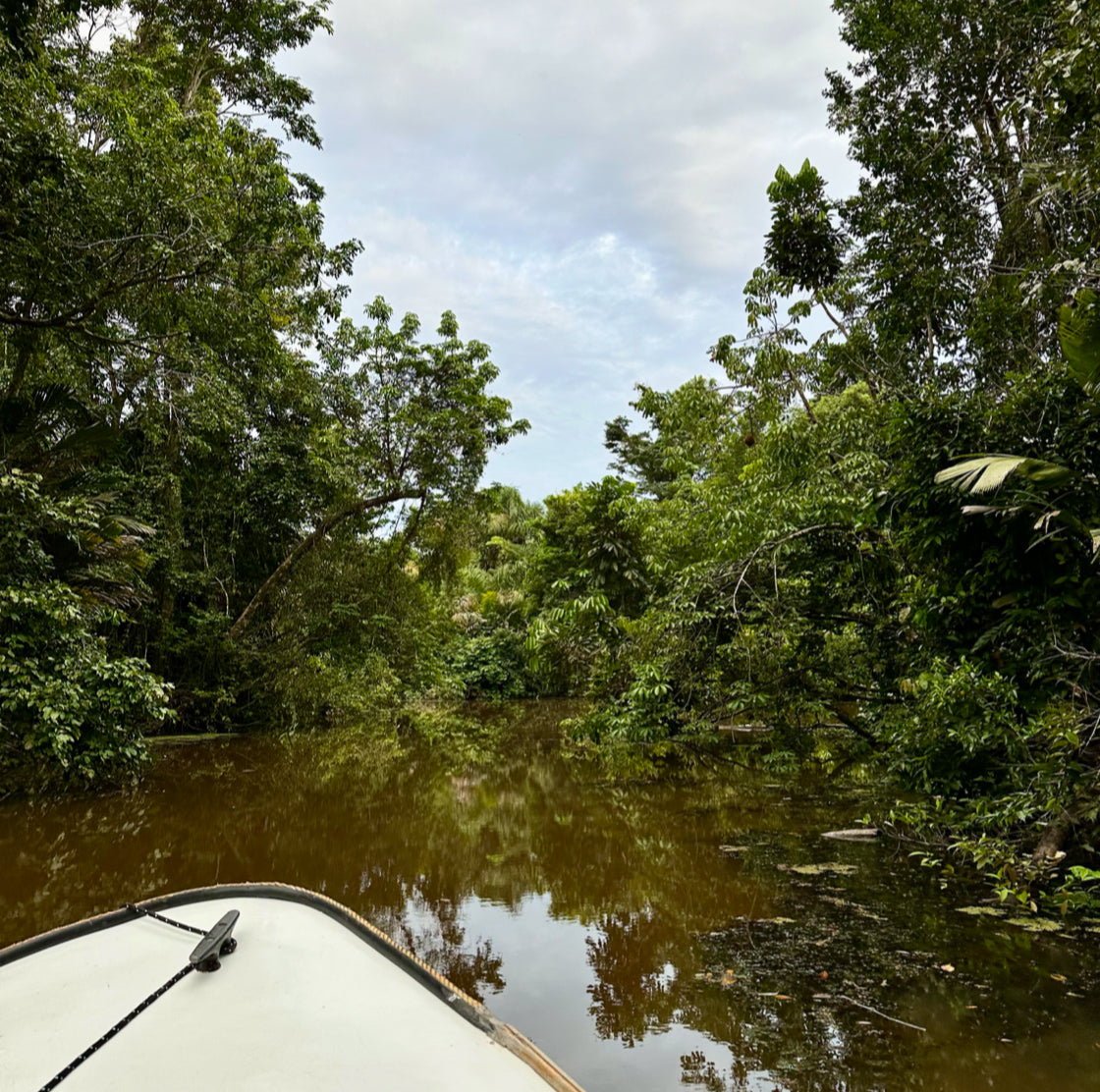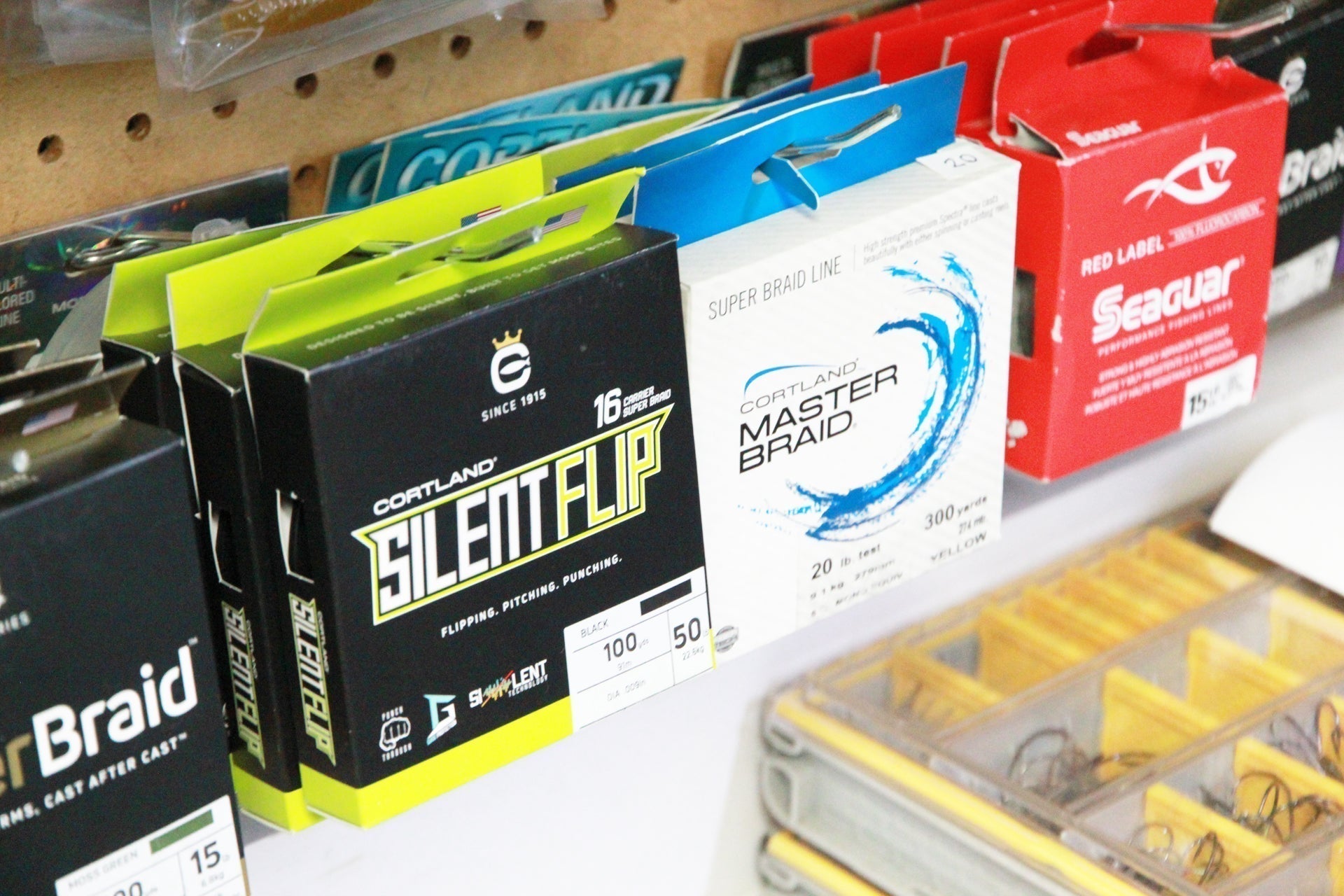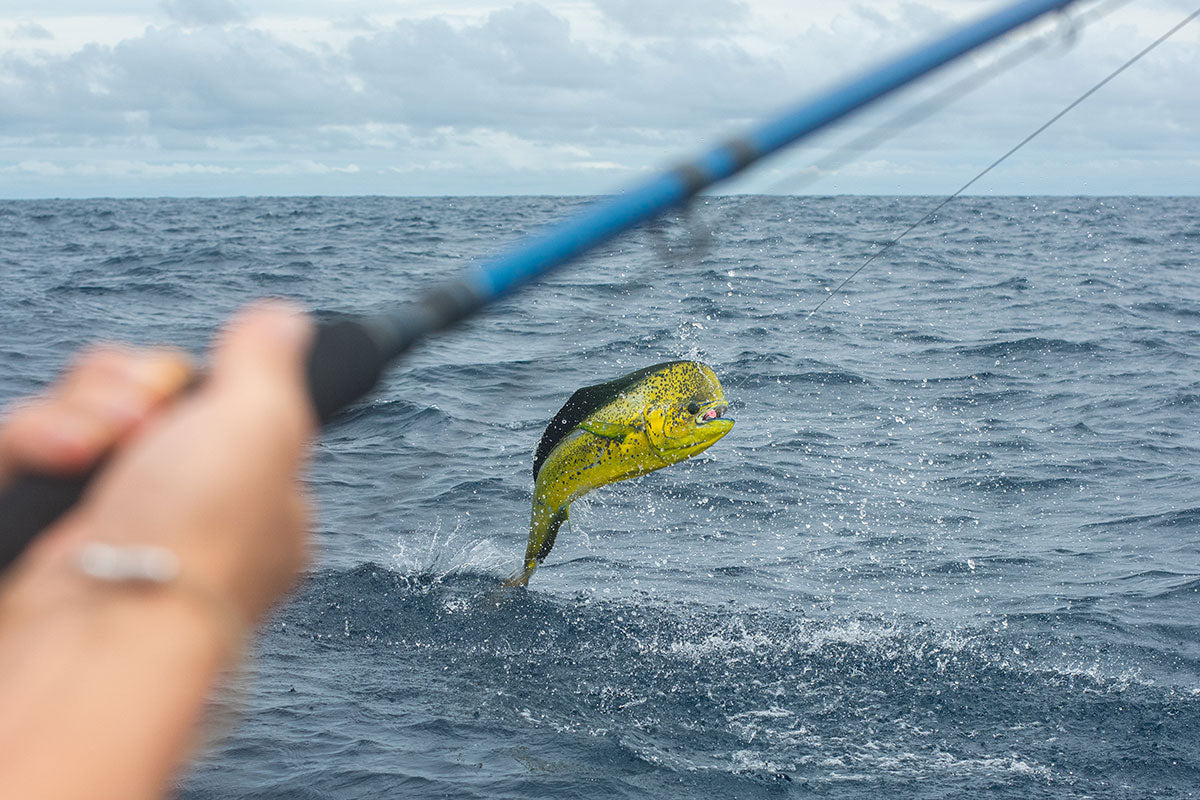Article Written by Ellie Reeves. Learn More About the Author Below / Article Read Time 6 Minutes
It’s not always sunshine and blue skies in the jungle. Unfortunately for us anglers, sometimes the best fishing times happen to coincide with the worst and most unpredictable weather in the tropics. Such is true for Costa Rican tarpon. Some of the best months for tarpon fishing also fall within the cyclone season. For those who haven’t experienced tropical jungle rain - it’s difficult to convey just how truly torrential it can be. I’ve stayed in hotels with showers which have had me step out drier than a mere five minutes stood in a tropical downpour! Needless to say, the rainforest truly lives up to its name. This most recent trip was no different. I had, in my ever-prepared nature, taken not one but two GoreTex jackets with me, anticipating having a handy backup should the first one get soaked. Yes, it really does rain that hard that even GoreTex eventually fails you. So a backup jacket was duly packed.

However, we awoke one morning to a stubborn storm, alternating between overcast and torrential rain. It was on this day which I managed to leave both these aforementioned jackets back at the lodge. This left me with the bright idea of MacGyvering myself a rather fetching ‘coat’ using a knife and a supermarket carrier bag, preempting the sudden torrential cascade of water encroaching upon us. This wasn’t just any tarpon fishing, it was M&S tarpon fishing. (Or in this case, The Co-Op.) On the plus side, I still had two dry jackets for the next day…

The next day was no different. Well, except for the wind. With both rain and now wind to contend with it quickly became apparent that we weren’t going to get out of the river mouth that day. The swell we were met with at the estuary was simply too extreme to safely navigate the boats through. The general consensus was we’d anchor up in the mouth and fish for tarpon anyway. We lasted about an hour. Neither of us particularly fancied the idea of hooking in to a 150-200lb fish with multiple boats anchor ropes within close proximity. All whilst being thrown around like rag dolls in a washing machine amongst the churning waves pummelling in to the river mouth. Instead we asked our guide if we couldn’t go back to get our lighter rods and fish the jungle instead; anticipating that it may be more sheltered and we could spend the day exploring the calmer waters. The look of relief on Leo’s face was an absolute picture. We reeled in and off we went in search of calmer water and smaller, but no less thrilling fish.

Guapote.
The local term to refer to the many species of cichlid which dwell within the murky backwaters of the dense jungle. Primarily the jaguar cichlid (Parachromis managuensis) and the rainbow bass (Parachromis Dovii), but also including the smaller black belted cichlid (Vieja maculicauda) and convict cichlid (Amatitlania nigrofasciata). Locals sometimes confusingly refer to these fish collectively as “Bluegills”, however they are markedly different to their North American namesakes.

Guapote are incredible fish. Aggressive, yet simultaneously rather particular. They love structure and favour the types of habitat a fly angler dreads… Tree roots. For this reason, we decided on 9 weight rods, as whilst the flies we were using were small, somewhere between size 8 and 10 hooks; we had both wind and structure to contend with. Not to mention the tenacious strength of these little warriors.
In addition to guapote the backwater lagoons also harbour small tarpon and snook; both of which will put a decent bend in a 9 weight. We also glimpsed some much larger tarpon rolling, hinting at the very real possibility of some true river monsters lurking in those dark tea stained waters. Despite the suggestion of hidden giants, did I mention how big guapote get? They can reach an impressive 15lbs. But more commonly topping out in the sub 8lb range. However, don’t let their diminutive size fool you. For a freshwater species, these fish are strong.

For any angler used to the comparatively modest fishing of the UK, targeting the European perch and pike, zander, or perhaps trout or sea bass… guapote will blow your mind and open your eyes. The fish we caught were on average around a pound or two, or 6-8 inches in length. Certainly not giants, but at no point did a 9 weight feel in any way over-gunning for them. Particularly when you consider that certain species can grow to 5-6 times that size! Pound for pound these cichlids certainly know how to fight. Like a chihuahua in a pit bull’s body, these guys scrap hard. The largest fish we had of perhaps 2 to 2.5lbs fought with the similar vigour of a perch twice it’s size! With a fish which upon hookup immediately takes off for the nearest cover, namely whichever unsuitable situated ball of roots it can dart within, it’s critical to horse them away from structure before it has a chance to snap you off. For this reason, depending on which other species you may encounter, something from a 7 to a 9wt with a good quality abrasion resistant fluorocarbon tippet of between 10-15lbs is ideal. We went with 9wts, as after all, what self respecting angler is ever going to turn down a cast at a rolling juvenile tarpon…
Line wise, a floating line is all that was required - using something like the Cortland Bass line for cooler conditions or if fishing in the blazing heat a similar tropics WF line such as the All Purpose XP or in more enclosed spaces, the Backcountry line with its nice compact head and short front taper is ideal for turning over either poppers or the weighted flies such as what we were using. Long casts weren’t essential, as the method we employed was to drift along the margins of the jungle canals, under oar power rather than motor.
Having spent the first couple of hours drifting slowly under engine power with just a mere handful of fish to show for our efforts, we switched up our approach and took to oar power. I say oar - our Leo did not have an oar. But he did have a broom. Not even a particularly good broom, but an old and tired one. Instead of motoring along, we found ourselves quietly sweeping along through the jungle - surrounded by the towering Kapok trees, listening to the cries of the howler monkeys, screeching macaws and catching occasional glimpses of fleeing basilisk lizards and enormous basking iguanas as our guide dutifully rowed the boat through the jungle. The scenery alone was worth the trip. Silence does not exist in the rainforest. Putting the sound of the jungle orchestra in to words will only do it an injustice - dozens of bird and insect species combine in to rendition of a tropical symphony, with the gentle lap of the water against our craft. We were absorbed in to the jungle. It was only then with the elimination of manmade sounds that the fishing really transformed. From then on we were blessed with a bite almost every cast as we drifted through the dense rainforest. All courtesy of Leo and his trusty broom!
Any pocket of water with overhanging vegetation, floating shrubs or stray log was fair game, and often held a fish or two. The closer to the bank the better - in particular for the illusive jaguar guapote. A beautifully vibrant gold bodied fish, with a mottled dark purple to black speckled lace pattern spreading across the body. Known locally as “guapote tigre” or tiger guapote. Like it’s namesake, these little guys lurk in the shadows, snatching any fly which has the audacity to invade it’s personal space. They were by no means prolific in this section of jungle, and to catch one of these beauties was a treasured prize. I was keen to add one to my species list, and am happy to say that by the end of the afternoon I finally had a tiger guapote barely the size of a playing card nestled proudly in my hand! My fishing partner however, managed a slightly more impressive one of around half a pound.

The most commonly encountered cichlid for us was the black belted cichlid. A steely blue coloured fish with long red tinged fins and a dark band across the body, giving them their common name. These little pint sized terrors were keen to gobble up our fly on a regular basis - but they were incredibly particular about which fly they’d take! Once we had the fly choice dialled in, every other cast was rewarded with a fish. On our trip, the fly of choice was a small size 10 Crazy Charlie. Not just any Crazy Charlie, but a gold one. Not pink, not orange - they even betrayed the old adage of “it ain’t no use if it ain’t chartreuse!”. Perhaps the murky tannin stained water had something to do with the visibility of this particular colour, but nonetheless - With only a precious few gold Charlie’s in the box, they were carefully guarded… especially after being snapped off by a fish earlier in the day and losing one.

After the inevitable happened yet again and another fly was sacrificed to snag purgatory, we found ourselves down to a single gold Charlie. Leading to a battle over who got to use it!
I drew the short straw, and I did still manage a few on other bright colours, namely orange, but gold fished slow and close to the banks really was the firm favourite and proved to be the real show stopper. Needless to say, these flies are tied on strong hooks, as despite their meagre size, there is always the chance of a trophy sized fish with a stubborn determination to retreat in to the nearest tangle of roots… By tying on good quality, strong hooks, you maximise your chances of landing one of these pugnacious beauties. On previous trips I’ve also had some success on small foam hoppers, and I’m sure they’d take kindly to a popper! However, in the overcast and semi stormy conditions, they seemed particularly fond of a fly presented sub surface.
In summary, an 8-9ft rod in the 7-9wt region (depending on one’s level of optimism!) paired with a floating line, a durable tippet material, and small, bold and flashy flies is the way to go. Fishing slow and close to the bank, either drifting or under manual power rather than the engine proved key to maximising catches.
Whilst no monsters were landed on our little excursion, they certainly exist in those murky depths. The lodge owner showed us photographs of fish caught, including an impressive rainbow bass which easily exceeded 10lbs in weight! In addition to the four species of guapote caught, we also caught a few small snook and an unusual venomous species known as a “pezcuera” or leatherjacket (Oligoplites palometa).
As the evening approached and the sun began to set we also started to see the classic tarpon rolls in the wider lagoon sections of the backwaters - cementing our belief on taking 9wt rods was certainly a good idea! However, those particular tarpon decided to evade us this time. There are certainly some big fish hiding out off the beaten track, and certainly worth spending the time fishing a little ‘off-piste’. Upon heading back to the lodge we joked how nobody was going to believe just how many fish we’d caught that day. Between the pair of us we’d easily caught sixty to seventy fish in one afternoon! Fully prepared for the ribbing we would get for telling “fisherman’s tales” about the jungle, we headed back to rejoin our group…
Overall, it proved an extremely enjoyable day and made a pleasant change from the gruelling exertion of tarpon fishing. I’d strongly recommend setting a day aside on a trip such as this to explore the backwaters, where you surely will encounter some of these undiscovered jewels for yourselves. If you’re lucky, you may even land yourself a trophy gem of a rainbow bass. We’ll certainly be back to fish these backwaters again.
… and of course, nobody believed us back at the lodge!
About the author
I’ve always loved fishing.
It began with my grandfather taking me fly fishing for stocked rainbows when I was young but it took until my late 20’s to really get in to fly fishing and fly tying properly. Now I’m strategically located a short drive from my local chalkstream, providing easy access to my target species of brown trout and grayling.
When not on the chalk streams you can find me fly fishing large still waters for zander, climbing mountains or dreaming of tarpon and planning my next adventure!



